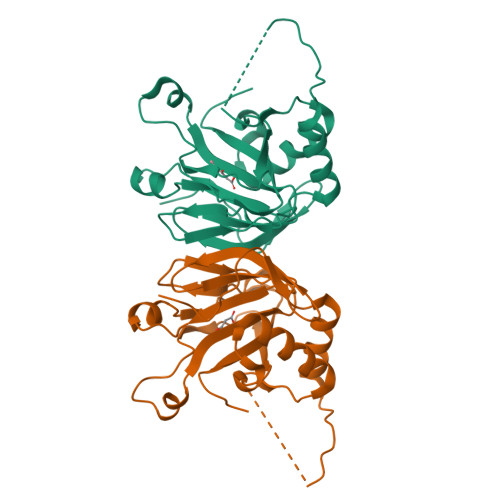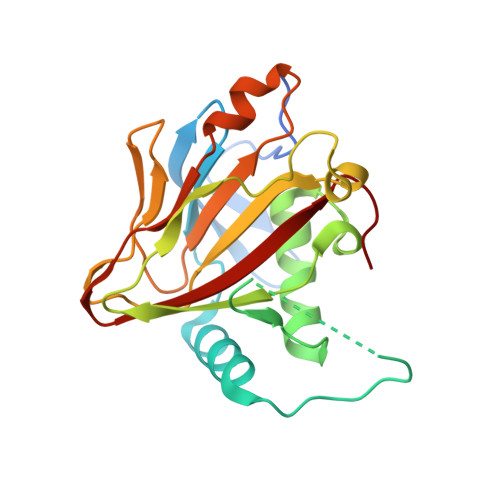Bacillus anthracis Prolyl 4-Hydroxylase Modifies Collagen-like Substrates in Asymmetric Patterns.
Schnicker, N.J., Dey, M.(2016) J Biological Chem 291: 13360-13374
- PubMed: 27129244
- DOI: https://doi.org/10.1074/jbc.M116.725432
- Primary Citation of Related Structures:
5IAT, 5IAV, 5IAX - PubMed Abstract:
Proline hydroxylation is the most prevalent post-translational modification in collagen. The resulting product trans-4-hydroxyproline (Hyp) is of critical importance for the stability and thus function of collagen, with defects leading to several diseases. Prolyl 4-hydroxylases (P4Hs) are mononuclear non-heme iron α-ketoglutarate (αKG)-dependent dioxygenases that catalyze Hyp formation. Although animal and plant P4Hs target peptidyl proline, prokaryotes have been known to use free l-proline as a precursor to form Hyp. The P4H from Bacillus anthracis (BaP4H) has been postulated to act on peptidyl proline in collagen peptides, making it unusual within the bacterial clade, but its true physiological substrate remains enigmatic. Here we use mass spectrometry, fluorescence binding, x-ray crystallography, and docking experiments to confirm that BaP4H recognizes and acts on peptidyl substrates but not free l-proline, using elements characteristic of an Fe(II)/αKG-dependent dioxygenases. We further show that BaP4H can hydroxylate unique peptidyl proline sites in collagen-derived peptides with asymmetric hydroxylation patterns. The cofactor-bound crystal structures of BaP4H reveal active site conformational changes that define open and closed forms and mimic "ready" and "product-released" states of the enzyme in the catalytic cycle. These results help to clarify the role of BaP4H as well as provide broader insights into human collagen P4H and proteins with poly-l-proline type II helices.
Organizational Affiliation:
From the Department of Chemistry, University of Iowa, Iowa City, Iowa 52242-1727.


















